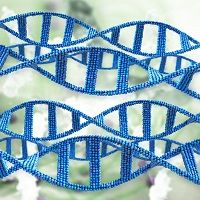Article
Genetic Mutation Linked to Increased Neuropathic Pain
Author(s):
A new study has found evidence that a specific genetic mutation may cause afflicted patients to feel more intense neuropathic pain.

A new study has found evidence that a specific genetic mutation may cause afflicted patients to feel more intense neuropathic pain.
Often associated with neuropathic pain syndromes like inherited primary erythermalgia (IEM), paroxysmal extreme pain disorder (PEPD), and idiopathic painful small fiber neuropathies (SFN), the researchers pinpointed a mutation to the gene SCN9A in Nav1.7, a voltage-gated sodium channel,as the culprit for even more discomfort. The findings were presented at the 2015 annual meeting of the American Academy of Neurology in Washington, DC.
All of the patients in the study showed symptoms — neuropathic pain, burning pain, and/or redness in the distal extremities – that suggested PEPD, primary erythermalgia (PE), paroxysmal extreme pain disorder (PEPD), or idiopathic painful small fiber neuropathies (I-SFN) between 2013 and 2014.
“Some of my patients can’t work because of the pain and some can’t even put on gloves,” lead author, Hayet Salhi, of the Department of Neurology Neurophysiology, Hospital of Tours in France, told MD Magazine.
The study group of 18 males and 20 females all had:
- Genomic screening of the SCN9A gene
- Neurological examination
- Skin biopsy to show intraepidermal nerve fiber density
The participants also had neurophysiological tests including:
- Nerve conduction study (NCS)
- Laser evoked potentials (LEPs)
- Quantitative sensory testing (QST)
- Suddoscan
Neuropathies were not determined, the study noted.
Out of the 38 participants, 8 (21%) had mutations in the SCN9A gene.To break it down further, the study showed that 3 patients displayed the abnormalities on exon 35, 3 on exon 20, one on exon 13, and one on both exon 16 and Val991Leu.
Salhi said that those with an abnormality had higher levels of pain which led the researchers to believe that it makes a real difference.While previous research had shown 2 SCN9A mutations in SFN patients, this latest discovery revealed the abnormalities occurred in those with IEM as well.
Furthermore, the team is moving forward now that the reason behind why some patients have more pain than others under these conditions has been identified.
“Now we are doing different clinical trials to help manage the pain,” Salhi said.
The physiological and pathogenic consequences of the SCN9A mutations continue to be examined.





